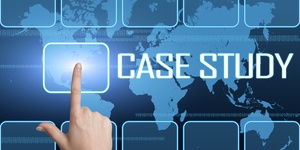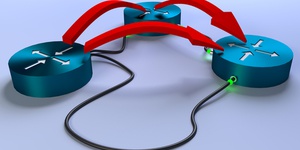
Whitepapers
THE ECONOMIC BENEFITS OF IP TRANSPORT AT 400G
A new architecture is emerging, and it stands to disrupt the way networks have been built for the last 10 to 20 years. This new network architecture effectively removes the optical switching layer and puts the switching onus back onto the router layer, thus simplifying the management of the entire network.
400 Gbps routers are delivering a massive increase in router scale and capacity, resulting in a significantly lower cost per bit router. At the same time, DCO optics have decreased in size and power consumption where 400G optics can now reside on a router card at much higher densities.
Should we change the architecture to allow transit traffic to flow through the router layer and remove the complexity of the optical layer? Peter Fetterolf's paper will examine both the capital expenditure and operational expenditure savings to provide a total cost of ownership model.
For more information about ACG's business case analysis program, contact info@acgcc.com.
You might like similar whitepapers


Global Pricing for SD-WAN

Always On, Active Analytics and AI for Superior Performance in Digitally Powered Enterprises

Maximizing Efficiency Using Standards-Based, Model-Driven Infrastructures in NFV Deployments

Next-Generation Cloud Metro Network Requirements and Architectures

The TCO Benefits of Dell’s Next-Generation Telco Servers

The Economic Benefits of Virtual Edge Services

A TCO Comparison of Private WANs vs Managed Network Services for Enterprises

INTRODUCING xHAUL REWRITING THE PLAYBOOK FOR TRANSPORT NETWORKING IN THE RAN IN 5G

Using Open Virtual RANs in 5G

Broadband Access Transformation

ECONOMIC BENEFITS OF THE VMWARE TELCO CLOUD AUTOMATION AND HORIZONTAL INFRASTRUCTURE

5G Service Assurance: The Case for AIOps

Huawei Autonomous Driving Network: Standards-Based but Differentiated

The Right Container Platform(s) for Modern OSS and BSS

The Missing Guide in SP Managed Services Profitability

Delivering Policy Continuity at Scale in Cloud IT and Managed Network Services

Mitigating Market Challenges in Telecommunications

THE BUSINESS CASE FOR ADAPTIVE IP

An Approach to Offering Profitable Managed Network Services

THE POWER OF DIFFERENTIATION: BUILDING BROADBAND FOR 2021 AND BEYOND

The Economic Benefits of Juniper Apstra and CN2 in a Modern 5G Network

TCO Benefits of Converged 5G Ready IP Transport

Nuage/ALU on the VNS Solution in an SP Context

THE ECONOMIC BENEFITS OF IP TRANSPORT AT 400G

Propelling Operators to L3 Operations Autonomy and Beyond with Huawei ADN

The Economic Benefits of Automating Capacity Optimization in IP Networks

Virtualization Journey: Cable Companies Are on Their Way

Coriant’s Multi-Sided Platform Partner Program: Market Impact Report

Achieving End-to-End Intelligence in the Cable Access Network

The Economic Benefits of Distributed Broadband Services

Huawei ADN Solution Approach to Implementing Autonomous Networks

Tunnel-Based versus Tunnel-Free SD-WAN

Understanding VRAN

Hybrid Networks: Integrated Provisioning for Virtual and Physical Networks

Coriant Groove™ G30 Disaggregated Platform Update: Market Impact Report

Building the Business Case for AI in Wireless Networks: Juniper Mist AI TCO Report

5G Service Assurance: The Case for AIOps

The Economic Benefits of the Ciena Virtualized Edge Solution

Segment Routing: An ACG Research Whitepaper

The Economic Benefits of a Super-Converged Multi-Access Edge Network

AUTOMATING 5G ACCESS DEPLOYMENTS

MODERNIZING THE CABLE SERVICE DELIVERY INFRASTRUCTURE

Disruption Propelling Massive Changes in Video Market

AUTONOMOUS NETWORKS: NOW IS THE TIME

Meet Market Needs with Software-Enabled Solutions





